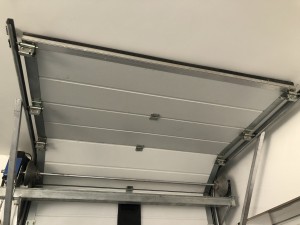can a sliding door be a fire door
Known for their aesthetics and space-saving benefits, sliding doors are commonly used in modern homes and commercial spaces. However, there is often confusion as to whether they are suitable as fire doors. In this blog, we will debunk myths about the fire safety features of sliding doors and help you understand the basic factors that make fire doors effective.
Learn about fire doors
Fire doors are an integral part of building safety and are designed to prevent the rapid spread of fire, smoke and toxic gases. Their purpose is to provide a safe evacuation route for the occupants and to protect the immediate area until emergency services arrive.
Sliding doors as fire doors – myth or reality?
Contrary to popular belief, standard sliding doors are not considered fire doors. Sliding doors are chosen mainly for their ease of use, space efficiency and aesthetic design. While they offer many advantages, they are not designed to withstand high temperatures and exposure to fire.
Fire doors undergo rigorous testing and certification to ensure their sturdiness in the event of a fire. They are made from special materials and sealing systems that effectively block flames and smoke, helping to control the fire and limit its spread.
Basic characteristics of fire doors
1. Fire Resistance Rating: Fire doors are classified based on their ability to withstand a fire for a specific duration expressed in minutes, such as 30, 60, 90 or 120 minutes. The higher the level, the longer residents have to evacuate and the better equipped firefighters are to control the blaze.
2. Intumescent Seals: These special seals expand when exposed to heat, creating an airtight seal between the door and door frame. This prevents smoke and toxic gases from entering other parts of the building.
3. Fire-resistant materials: Fire-resistant doors are made of materials that can withstand extreme temperatures. They are typically composed of steel, plaster, and various fire-resistant composite materials and are specifically designed to resist fire and its associated hazards.
4. Automatic closing mechanism: Fire doors are designed to automatically close when the fire alarm system or high-temperature melted fuse is triggered. This mechanism prevents the door from opening unintentionally, allowing fire and smoke to spread quickly.
Things to consider when choosing sliding doors
Although not classified as fire doors, there are some ways to incorporate fire safety measures when choosing a sliding door:
1. Zoning: Make sure your building or living space is adequately zoned using fire-rated walls and doors. This prevents the fire from spreading between areas, giving occupants more time to evacuate safely.
2. Smoke alarms and sprinkler systems: Install smoke alarms and sprinkler systems for early detection and extinguishing of fires. These systems can significantly reduce the risk of injury and property damage.
3. Emergency Escape Routes: Always ensure designated emergency escape routes comply with local building codes and regulations. These routes should include fire doors leading to emergency exits and should not be blocked or obstructed.
While sliding doors are a popular choice for homeowners and businesses around the world, it’s important to understand their limitations when it comes to fire safety. Fire doors have special structural and fire-resistant properties that are critical to protecting life and property during a fire emergency. By taking appropriate fire safety measures and understanding the purpose of fire doors, we can optimize fire protection in our spaces and keep ourselves and others safe.
